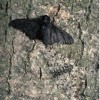
Irena Yamboliev, “Christopher Dresser, Physiological Ornamentist”
This article argues that, in 1862, when he published his most influential book The Art of Decorative Design, Christopher Dresser joined the multi-disciplinary enterprise of the physiological aesthetics in the name of ornamental form, positioning the theory of ornament as a crucial cutting edge of the empirical study of human aesthetic responses. I read The Art of Decorative Design in relation to contemporary psychological-aesthetics texts by Alexander Bain, Herbert Spencer, James Sully, Edmund Gurney, and Clementina Anstruther-Thomson and Vernon Lee to show that Dresser finds in ornamental form a site for a materialist physiological understanding of aesthetic response—and he does so well prior to the essays on aesthetics that were published in the journal Mind from the 1870s on. Like contemporary empirical aestheticists—and in distinction to other ornamentists of his time—Dresser emphasizes the mental “laws” that orchestrate our reactions to forms in nature and in ornament alike. Tracing in Dresser’s design handbook an approach to ornamental form that becomes fully “physiologized” in Bain’s, Sully’s, Gurney’s, and Lee’s writing makes more complete the critical picture of the so-called “lesser” (and often pejoratively feminized) decorative arts as a fertile ground for the theories and practices the empirical aestheticists were pursuing.

Nathan K. Hensley and John Patrick James, “Soot Moth: Biston Betularia and the Victorian End of Nature”
The darkened form of the common peppered moth, biston betularia f. carbonaria, known colloquially as the “soot moth,” was virtually unknown in England prior to 1800. The first reliable field specimen was collected outside of Manchester in 1848, plucked from the heart of Victorian England’s rapidly expanding coal economy. With their black abdomen and wings, these darkened morphs contrasted starkly with what had once been the more frequent form: a white-bodied moth lightly speckled with black and brown. As scientific studies now show, the black morph appeared as a result of industrial manufacture, first around major production centers and later around London. This article traces those studies to argue that the emergence of this particular form of melanistic moth signals a sharp pivot in Britain’s environmental history: its appearance augurs a new fossil modernity, in which coal replaces wood and animal fats as the primary source of English energy, and as stored sunlight, archived as coal, takes center stage as the driver for an endless steam-powered project of worldmaking. Tracing studies of “industrial melanism” to its origins at the beginning of this extractive, fossil-fueled modernity helps us see the soot moth’s emergence as a watershed moment in the history of life and a new chapter in humankind’s relationship to the category of nature.

Kathleen Frederickson, “British Writers on Population, Infrastructure, and the Great Indian Famine of 1876-8”
This article examines British writing about the 1876-8 famine in southern and western India. In British newspapers and journals, the turn to thinking about famine in terms of the total population obscured the extreme variations in food access that worsened with rising economic inequality. When the British press in the late-1870s turned to human causes of famine, they either argued that India’s population overburdened India’s land, or suggested that more rail construction would prevent enough deaths sufficiently to mitigate British responsibility for famine conditions. The turn to population-based arguments helped either to perpetuate the belief that famine was a quasi-natural part of India or to parse the sudden increase in the frequency and severity famines in India under British rule.

Siobhan Carroll, “On Erasmus Darwin’s The Botanic Garden, 1791-1792″
1792 witnessed the publication of the complete version of Erasmus Darwin’s The Botanic Garden, a lengthy nature poem that surveyed the state of science in its day. The Botanic Garden proved immensely popular on its publication but later fell out of favor as the Anti-Jacobin took aim at its liberal politics. This paper focuses on one of the most notorious sections of the poem, in which Darwin describes his plan to change the world’s climate via iceberg destruction. The argument traces the reception of Darwin’s climate imagery from its initial reception through its redeployment in the poetry of Percy Bysshe Shelley. Although The Botanic Garden and its plan for climate intervention might be framed in terms of what philosophers call the “negative event”—an event that fails to happen—Darwin was essentially correct in his assertion that the technologies of the industrial revolution could be used to change the climate of the globe.

Amy M. King, “Publication of Gilbert White’s The Natural History of Selborne, 1789″
In 1789, Gilbert White publishes The Natural History of Selborne, which encapsulates in epistolary form his natural history observations of a single parish for forty years. Selborne’s way of looking at nature—attentive, local, and reverent—popularizes a way of looking at nature that persisted in popular natural history throughout the nineteenth century. The importance of White’s natural history, both in itself and through its afterlife as a canonical text, depends on our understanding its key orientation: nature as seen through the lens of ecology and reverence.
